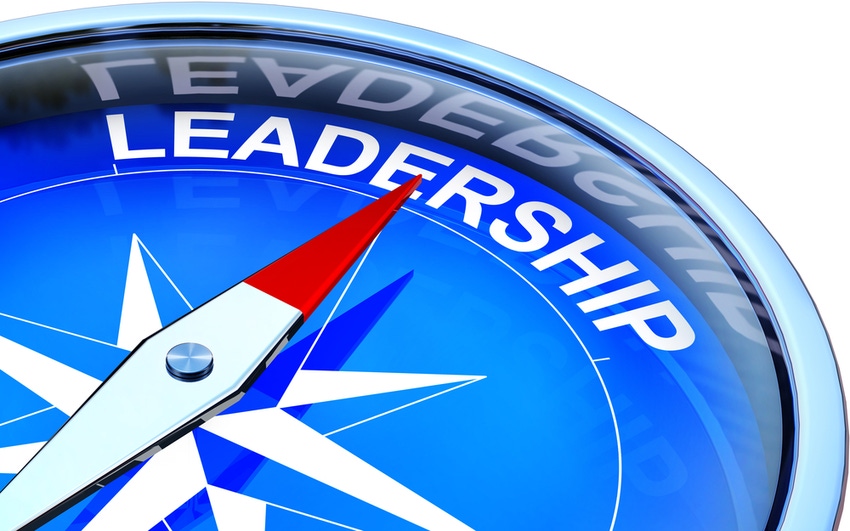Microsoft's Schuster talks about partner opportunities and channel objectives in 2018.
January 2, 2018


Lynn Haber
Just a few weeks ago, Microsoft’s Gavriella Schuster, corporate vice president, Commercial Partner Channels & Programs, reported to Ron Huddleson, corporate vice president of the Microsoft One Commercial Partner (OCP) Group. Now, she’s replaced him. Huddleston, who has worked at Microsoft for less than two years and took the helm at OCP in February of this year, is on indefinite family leave.
Schuster, even before this recent move, was still considered Microsoft’s channel chief, a title bestowed on her in July 2016 when she was named the corporate vice president, Microsoft Worldwide Partner Group (WPG). (Microsoft has since done away with WPG — it’s now Worldwide Channels & Programs under OCP.) At the time, she replaced Phil Sorgen, who held the top channel slot for just over two years.
We caught up with the veteran Schuster – she’s been with the company since 1995 – to discuss her channel responsibilities, how she leads, and what’s ahead for partners in 2018. (The transcript below has been edited for clarity.)
Channel Partners: You’ve had the opportunity to work with and observe Microsoft’s much lauded CEO Satya Nadella’s leadership style. How has this translated into your role and working with partners?
Gavriella Schuster: Satya is an amazing person. When he took over the cloud and enterprise business, he was good at being clear about our objectives and it made our jobs much easier. When Satya became CEO, he very much did the same thing — that is, create a lot of clarity for the organization.

Microsoft’s Gavriella Schuster
The way I translate that is, that it’s important for us to have clarity, to be transparent, and to provide the inspiration and the view into the innovation for our partners. To help them understand what is really important the customer, to the market, and to us. And, the convergence around value for them and getting very clear — not trying to do lots of things but rather doing a few things really well.
In the new operating model – One Commercial Partner Group – that we rolled out for working with partners, we did two things: One, we got clarity with them that we’re in four core businesses and we would like our partners to help build solutions for them; and two, we said, we’re going to help you in three ways: we’re going to help build your businesses, we’re going to help your build your go-to-market, and we’re going to sell with you.
CP: As we all know, there’s a lot of transformation going around – partners, Microsoft – so you’re challenged to keep enablement in tune with what partners need as they transform their businesses, and they’re moving at different speeds. How is Microsoft enabling partners?
GS: The things we’re enabling are better ways for partners to get connected to customers and better ways for partners to get connected to each other. As we look at making this a true ecosystem and driving value to the customer – and as our partners transform, which means that they’re getting much more specific and prioritizing what they focus on within their own businesses – it becomes even more important for them to work with each other to deliver on the full solutions to customers.
Microsoft’s Gavriella Schuster will deliver a keynote at the upcoming Channel Partners Conference & Expo, April 17-20, 2018, in Las Vegas. Go here to register for what will be the largest CP Expo ever! |
The opportunity that we have by having all of the various ways that partner build solutions under one roof enables us to …
… bring the value back to the partners so they understand what that may look like. So, for example, enabling new solutions around the industry and horizontal solutions with partners that are building IP or applications, and help them go to market with or through other partners who have similar offers through managed services or around project services or systems integration, really enables them to deliver a complete package to the customer.
We’re very much focused on — how do we enable that connectivity to happen? How do we build community within the ecosystem, and how do we leverage our assets, like the partner program and LinkedIn, to help those partners find each other and make connections? That’s a big investment area for us. Another area is getting them to connect to customers. Here, it’s about the investments that we’ve made in how we market to customers, how we get those leads, qualify them and send them to our partners. And it’s the way we work in the field to co-sell with our partners and reward our field for co-selling with partners on their solutions.
We also have a pilot underway with a handful of ISVs to bring their applications out through our existing channel, through our cloud solutions program. Really creating the right connections and getting them to market faster and into the hands of the customer — that’s our primary goal.
CP: What are the biggest challenges for partners? Microsoft plays in multiple channel spaces. What are you seeing?
GS: I think that the biggest opportunity for partners is to rethink the way they sell technology and who they’re selling to. The buyers of technology have shifted — primarily away from it being an IT sale to a business decision-maker on the front end running a business [that] is looking to technology to support and enhance their business. The technology has gotten to a place where because it’s untethered, you don’t need to have these massive CapEx expenses on the back end and you don’t need to be running it in your data center. It makes good decision-making easier for the business decision-maker without disrupting the state of the business.
Partners need to learn how to focus on the buyer and the value proposition of the technology for that buyer, and to think more expansively about what solutions can do. The other thing that partners need to understand is where the value is within their organization and what’s going to differentiate them. There are a lot of commodity services out there, and many of the prior kind of system-integration services are not as required when people can buy point solutions that support them over the cloud.
What partners need to think about: “Is my real value in the fact that I understand this market and I know these customers and I have their trust? Now I need to create partnerships to ensure that what I’m delivering is the value that they need.” Or, is it: “I’m really great at delivering managed services and understand how to support my customer over time. And I can do that even easier now through the cloud without having to go through the expense of building a data center.” It enables a lot of partners to …
… get into the business of managed services, something they couldn’t do before.
Many tools that we’ve provided through our cloud services and CSP [Cloud Solution Provider] program enable [partners] to be able to manage on behalf of the customer over the cloud.
Partners should also think about industries or horizontal solutions, and being very prioritized around that. It’s very different to be running a business that focused on modern workplace as a service versus a business that focused on providing infrastructure and the applications that a customer may need, the security, and the manageability. What do they want to deliver and what is their core value?
CP: What’s Microsoft’s biggest challenge regarding its partners? What does Microsoft have to do to keep the partner satisfied?
GS: I think the biggest challenge is the enablement, ensuring that they have a way to continue to skill up the talent of their people and hire great talent. We have a talent gap in the marketplace today, particularly around data scientists, with the new wave of machine learning and AI; we need more of those and there’s just not enough in the market.
So, how do you transfer knowledge from people who have like knowledge today or grow new talent, and how do we help partners keep up with the technology changes and keep up with the road map of the innovation that we’re doing, so that [partners] can make the most of the innovation that we provide?
There [are] a lot of changes happening very rapidly and most of the mechanisms for communication can get overloaded. So how do we keep it clear and yet provide them with the right resources, such as just-in-time trainings, and get the training into media, like massive open online courses where they can consume it as they need it, whether they’re working on projects with customers or building applications?
CP: Other challenges that partners need to address?
GS: When I talk about the top partner opportunities … they’re around artificial intelligence, getting into the data of their customers … if they can help the customer unlock their data, that’s going to be a huge value to the customer. New legislation, such as [General Data Protection Regulation] in Europe, I think, is really going to impact companies across the U.S. They have to figure out how they get their data out of the manual state and out of these locked libraries, and into a common data format, because they’re going to have to use it for GDPR.
So, [it’s] taking advantage of that opportunity and helping a customer see that they’re unlocking a set of opportunities around that once they do unlock that data, and now they can use it in ways that they’ve never imagined is a huge opportunity for our partners.
The other huge opportunity for our partners is …
… in new devices and new device form factors around IoT, and even the modern workplace as a service — enabling customers to work in new ways and enabling new opportunities for the technology to work within customer businesses.
The only limitation for the technology is imagination. It’s a great time, a great opportunity, and also requires a great deal of creative thinking.
CP: What are the key areas of focus for Microsoft in 2018?
GS: The key areas of focus for us are around the modern workplace and helping customers to unlock their own digital transformation. We see that about empowering employees, which for us is all about giving them new ways of working, new ways of communicating and collaborating — that’s the modern workplace.
[It’s] business applications, helping customers rethink how they run their business[es] and optimize their operations. [It’s] helping them see how they can optimize using cloud services with our business applications for new field service operations, customer service and sales.
[It’s] apps and infrastructure, which is about utilizing the scale of the cloud platform, the hybrid platform with our new Azure Stack, which enables them to seamlessly move between their own data center and the cloud, and enables them to unlock their data in new ways. Then, [it’s] all of the new applications that we’re working on with our ISVs to bring that on the same platform.
Also, what I was talking about before – data and artificial intelligence – and the ability to unlock the data that has been stored in so many places around the organization. Helping them rethink what business they’re in and helping them rethink the ways they do predictive analytics across the organization and get insights into their customers and their own financials.
CP: Anything you’d like to add, to say to readers?
GS: There’s never been a better time to be a Microsoft partner. The investments that we’ve made in helping partners to build their business, the investments to help them build their specialization, their differentiation, their go-to-market. The level of profitability is higher than ever. The opportunity and the market are higher than ever because now we’re focused on helping customers unlock new product areas and move from the back office to the front office.
It’s a very exciting time, it’s lots of fun and Microsoft is all-in to support our customers.
Read more about:
AgentsAbout the Author(s)
You May Also Like


